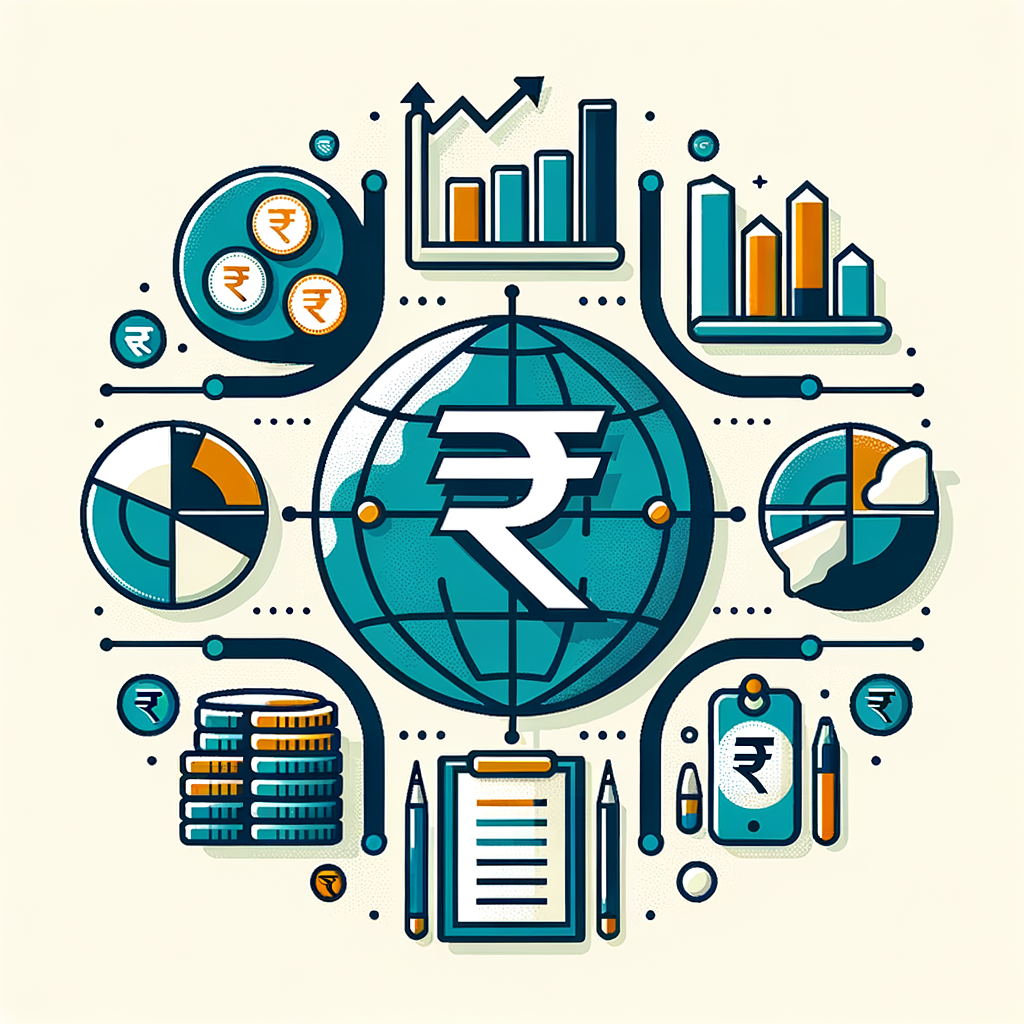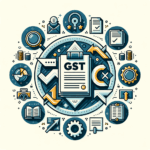Analyzing the Effect of Global Economic Changes on GST in India
From headlines about supply chain disruptions in Europe to news of interest rate hikes by the U.S. Federal Reserve, global economic events can feel distant. However, their ripple effects are felt right here at home, influencing everything from the fuel in your car to the cost of raw materials for your small business. While many understand that these global shifts impact stock markets, few grasp their direct impact on indirect taxes like the Goods and Services Tax (GST), which is embedded in the price of nearly everything we buy. This article provides a clear analysis of the effect of global economic changes on GST, helping you, as a small business owner or a salaried individual, to navigate the financial implications for your business and household budget.
Understanding Key Global Economic Changes Affecting India
To understand the impact on GST, we must first recognize the major global economic forces at play. These international trends create a complex web of challenges and opportunities for the Indian economy, influencing everything from investment flows to the cost of everyday goods. Analyzing global economic trends India reveals several key factors that have a direct bearing on our domestic financial landscape, and understanding them is the first step toward managing their consequences. The intricate connection between global economic changes and Indian economy is more pronounced than ever in our interconnected world.
Global Inflation and Interest Rate Hikes
When major economies like the United States or the European Union face high inflation, their central banks often respond by increasing interest rates. This makes it more attractive for global investors to keep their money in those countries to earn higher returns. As a result, foreign capital can flow out of emerging markets like India. This can lead to a weaker Indian Rupee and impact investment in Indian businesses. This global fight against inflation has a direct, tangible effect on currency values and investment climates, setting the stage for significant changes in our domestic economy.
Supply Chain Disruptions
The world is still recalibrating from the post-pandemic era, and new geopolitical conflicts have further complicated global supply chains. When a key manufacturing hub faces a lockdown or a major shipping lane is disrupted, it creates a domino effect. The cost of transporting raw materials and finished goods skyrockets, and delivery timelines become unpredictable. For Indian businesses that rely on imported components—from microchips for electronics to specialized chemicals for manufacturing—these disruptions mean higher operational costs and potential production delays.
Geopolitical Tensions & Trade Policies
International conflicts and shifting alliances can cause sudden and dramatic changes in trade policies. A new trade agreement could open up favorable markets for Indian exports, while a trade dispute could lead to punitive tariffs, making imported goods more expensive. These geopolitical chess moves directly influence which countries India trades with and on what terms. For businesses involved in import or export, this uncertainty requires constant monitoring and strategic adaptation to remain competitive and compliant with changing regulations.
Currency Fluctuations
One of the most direct impacts of global economic shifts is on currency exchange rates. The value of the Indian Rupee (INR) against major currencies like the US Dollar (USD) is a crucial economic indicator. When the US Dollar strengthens, it takes more Rupees to buy one Dollar. Since most international trade, especially for commodities like oil, is priced in USD, a weaker Rupee automatically increases the cost of our imports. This directly fuels inflation within India, as the higher cost of imported goods gets passed down to consumers.
A Quick Refresher: How GST Works in India
Before we dive deeper into the specific impacts, it’s essential to have a clear, simple understanding of how GST operates. Think of it not as a complex financial puzzle but as a straightforward system designed to tax goods and services at the point of consumption. This foundational knowledge is key to appreciating how sensitive our tax collections are to the economic shifts discussed above.
The Core Concept: A Consumption-Based Tax
At its heart, GST is a tax on the final price paid by the consumer. Every time a product or service changes hands in the supply chain, a tax is collected, but businesses can claim credit for the tax they’ve already paid on their inputs. This process continues until the product reaches the final consumer, who bears the ultimate tax burden. Because it’s tied directly to the price and volume of what people buy, GST revenue is a real-time indicator of the nation’s spending habits and is highly susceptible to factors like inflation and economic uncertainty.
Key GST Components
GST in India isn’t a single tax but is split into a few key components depending on where the transaction happens. Understanding these is crucial, especially when discussing international trade.
- CGST & SGST: For transactions happening within a state (intra-state), the GST collected is split between the Central Government (Central GST or CGST) and the State Government (State GST or SGST).
- IGST (Integrated GST): This is the critical component for our discussion. IGST is levied on transactions between states (inter-state) and, most importantly, on all imports into India and exports from India. The Central Government collects IGST and then apportions the state’s share. This direct link to imports and exports makes IGST collections a primary channel through which global economic changes affect our tax system.
For a more detailed explanation, you can read our blog post: What is GST? A Simple Guide for Beginners.
Analyzing the Direct Effect of Global Economic Changes on GST
Now, let’s connect the dots between the global trends and our domestic tax system. The effect of global economic changes on GST is not just a theoretical concept; it manifests in government revenue figures, business balance sheets, and household budgets. From the price of imported electronics to the competitiveness of our exports, these global forces have a direct and measurable impact on GST collections and compliance.
Impact on Imports, Exports, and IGST Collections
This is where the impact is most direct. When the Indian Rupee weakens against the US Dollar, the cost of importing goods rises significantly. GST law requires that IGST be calculated on the “assessable value” of the imported goods, which includes the cost, insurance, and freight (CIF) value, plus any customs duties. When this value increases in Rupee terms due to currency depreciation, the amount of IGST paid at the port also increases automatically. For instance, if an item costs $1,000, its assessable value at ₹80/$ is ₹80,000. At ₹83/$, the value becomes ₹83,000, and the IGST paid on it rises accordingly, even though the product itself hasn’t changed.
For businesses, this creates a significant challenge. While the higher IGST paid on imports can be claimed back as Input Tax Credit (ITC), it leads to short-term cash flow blockages. The business has to pay the higher tax upfront and wait to offset it against future sales, putting a strain on its working capital. On the other hand, a weaker Rupee can make Indian exports cheaper and more attractive to foreign buyers. However, this advantage can be nullified if a global recession reduces overall demand, creating a conflicting impact of the global economy on Indian markets. The Impact of Global Events on Share Market Trading is another area where these effects are clearly visible.
Inflation’s Effect on GST Revenue
Global inflation contributes to rising prices for goods and services within India. When prices go up, the total value of transactions also increases. Since GST is calculated as a percentage of this value, GST collections naturally rise in absolute (nominal) terms. For example, if a product costing ₹100 with 18% GST sees its price rise to ₹110 due to inflation, the GST collected per unit increases from ₹18 to ₹19.80. From the government’s perspective, this might appear as robust economic activity, with monthly GST collections hitting record highs. However, these higher figures can be misleading as they may mask stagnant or even declining consumption volumes, indicating underlying economic stress for consumers and businesses.
Shifts in Consumer Spending and Sectoral GST Impact
During periods of high inflation and economic uncertainty, one of the most significant effects of a global recession on India is a change in consumer behavior. Salaried individuals and families tend to tighten their belts, cutting back on discretionary spending and prioritizing essentials. This means less spending on items in the highest GST slab (28%), such as luxury cars, high-end electronics, and vacations. Instead, spending shifts towards essential goods, many of which fall under lower GST rates (0%, 5%, or 12%), such as basic foodstuffs, public transport, and healthcare. This behavioral shift directly alters the composition of GST revenue. The government may see a dip in collections from high-tax sectors and a relative increase from low-tax sectors, reflecting the cautious mood of the consumer.
Potential Government Response: GST Council Decisions
The GST Council, the governing body for GST in India, closely monitors these economic trends. In response to significant global economic shifts in India, the Council may decide to intervene. For instance, to combat severe inflation and provide relief to households, the Council could consider temporarily reducing GST rates on certain essential goods and services, such as edible oils or packaged foods. Conversely, to shore up revenues, they might consider rationalizing the GST structure or increasing rates on certain non-essential or luxury items. These decisions are complex, balancing fiscal needs with public welfare, and businesses must stay alert to any announcements. For the latest updates, it’s always advisable to check the official GST Council website.
What This Means for You: Actionable Steps
Understanding these complex interactions is one thing, but translating that knowledge into practical action is what truly matters. Whether you’re running a business or managing your family’s finances, you can take proactive steps to mitigate the risks and navigate the challenges posed by these global economic shifts.
For Small Business Owners
The global economic impact for Indian businesses is most acutely felt in day-to-day operations. Here’s what you can do to stay resilient:
- Review Your Pricing Strategy: Don’t absorb rising costs silently. You must regularly re-calculate your product or service costs, factoring in the higher price of imported raw materials and the increased IGST you pay on them. Adjust your final prices strategically to protect your profit margins without alienating your customer base.
- Optimize Cash Flow & ITC Management: With higher upfront IGST payments on imports, effective working capital management is non-negotiable. Be diligent and timely in filing your GST returns to claim your Input Tax Credit (ITC). If you need a refresher, see our guide on How to File GST Returns Online: A Step-by-Step Guide of the GST Filing Process & Procedure. Delaying your ITC claim means your own money is blocked with the government, restricting your ability to pay suppliers, salaries, or invest in growth.
- Stay Updated on Compliance: Economic uncertainty can prompt the government to make changes to GST rates or compliance rules. Follow announcements from the GST Council closely. A sudden change in a tax rate can impact your invoicing, accounting, and bottom line.
- Diversify Your Supply Chain: If possible, explore domestic suppliers for raw materials to reduce your dependence on imports and insulate your business from currency fluctuations and international shipping disruptions.
Call-to-Action: TaxRobo’s accounting and GST filing services can help you manage your compliance seamlessly during uncertain economic times. Our experts ensure your ITC is claimed on time and your business stays compliant with all regulatory changes. Contact us today!
For Salaried Individuals
You might not be filing GST returns, but you are paying it on almost every purchase. Here’s how these global changes affect you:
- Budget for Inflation: Understand that the final price tag on a product in a store includes the GST component. When global inflation drives up the base cost of goods, the GST amount on it also rises, leading to a higher final price for you. Factor this hidden tax-on-inflation into your monthly household budget to avoid surprises. Knowing the Top 10 Tax Deductions for Salaried Employees in India can also help you save more and manage your finances better during such times.
- Understand Price Hikes: The next time a company announces a price increase and blames rising input costs, you’ll know exactly what that means. It’s not just the raw material that got more expensive; the IGST paid to import that material also increased, and this entire chain of costs is ultimately passed on to you, the final consumer.
Conclusion
The world is more connected than ever, and it’s clear that global economic tremors have direct aftershocks on our domestic tax system. The effect of global economic changes on GST is a critical and multifaceted issue that impacts everyone. From higher IGST on imports due to a weaker Rupee, to inflated GST collections that mask real economic health, and shifts in consumer spending that alter tax revenues, these connections are undeniable. By understanding these dynamics, both small business owners and salaried individuals can make more informed financial decisions, anticipate challenges, and strategically navigate the complexities of our modern economy.
In these turbulent times, staying informed and seeking professional guidance is paramount. Whether you need assistance with GST registration, timely filing to manage your cash flow, or strategic financial advice to steer your business, TaxRobo’s team of experts is here to guide you.
Frequently Asked Questions (FAQs)
1. How does a global recession directly affect GST collections in India?
A global recession can reduce demand for Indian exports, impacting IGST revenue which is levied on goods leaving the country. Domestically, it often leads to lower consumer confidence and reduced spending on non-essential, higher-taxed goods like cars or luxury items. This shift in spending can decrease overall GST revenue, even if inflation on essential goods keeps the nominal collection figures high. This is one of the key effects of a global recession on India’s tax system.
2. Will the Indian government change GST rates because of global inflation?
The GST Council has the authority to revise rates and may do so in response to significant economic pressures. To provide relief to consumers during periods of high inflation, the Council might consider reducing GST on essential items. However, such decisions are complex and depend on the government’s fiscal position and overall economic strategy. It is crucial to follow official announcements from the GST Council for any definitive changes.
3. As a small business owner, what is the biggest GST-related challenge from global economic shifts?
The primary challenge for most small businesses is managing working capital and cash flow. When the cost of imported raw materials rises due to currency fluctuations or supply chain issues, the upfront IGST payment also increases. While this higher IGST can be claimed as Input Tax Credit (ITC) later, it effectively blocks a significant amount of cash in the short term, making it difficult to manage day-to-day operational expenses.
4. How does the value of the Rupee against the Dollar impact my GST on imported goods?
When the Rupee weakens against the Dollar (e.g., the exchange rate moves from ₹80/$ to ₹83/$), the value of your imported goods in Rupee terms increases. IGST is calculated on this higher Rupee value (the assessable value). Consequently, you are required to pay more IGST at the time of import. This directly increases your landing cost for the goods and puts immediate pressure on your cash flow until you can claim the amount as ITC.



